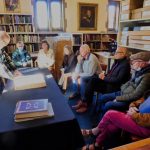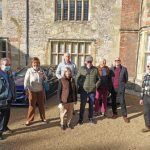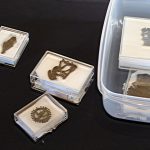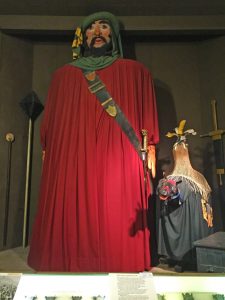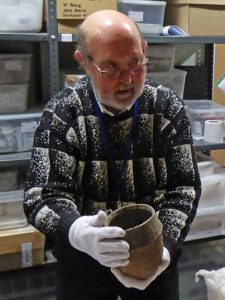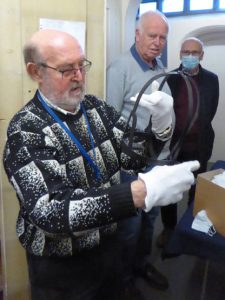Eight members self-drove to Salisbury and met at the Museum café for coffee. We assembled in front of the museum for 11am when Roger our Guide joined us, and we commenced with the history of the building from the 13th century until its occupation by the museum in 1981.
We then moved on to explore the labyrinth of storerooms and corridors behind the exhibition areas. A vast array of items is kept as varied as a somewhat macabre Victorian toy to several thousand-year-old archaeological finds, which we were able to handle and view close-up. This provided us with an experience much more tactile and real than just seeing these items behind the glazed screens of the exhibition cabinets. It was quite bewildering learning of the volume of artifacts that the museum is holder of, not only in its rarity but the value relating to some of the raw material used in its creation.
The Group broke for lunch at the café, which was excellent and very good value.
Earlier our guide also discussed a lot about the history of Salisbury and why the Cathedral was moved from Old Sarum to establish Salisbury as we now know it. It is believed to be the first living space within the UK that created a drainage system (where to this day many items are still being discovered when repairs are in progress). The museum has created a new area dedicated to Salisbury History and some of us took advantage of this and found it most interesting. Over the years they have held various street parades exhibiting numerous things including the Giant Man, which represented the Taylors Guild as this played a big part in the local industry.
Also, the museum was holding a temporary exhibition “Cutting It Fine” – which is The Art of the British Wood Engraver. This artwork is created by using tools traditionally made for metal engraving, resulting in unbelievable levels of precision and fine detail in the production of prints from wood engravings. This exhibition goes on until January and is well worth a visit. Unable to show an example of the final product as print is copyright.
We would like to extend our thanks and good wishes to Roger for a very informative and enthusiastic guide, which was much enjoyed by all.
Our visit ended around 4pm, with our heads buzzing with new knowledge.
